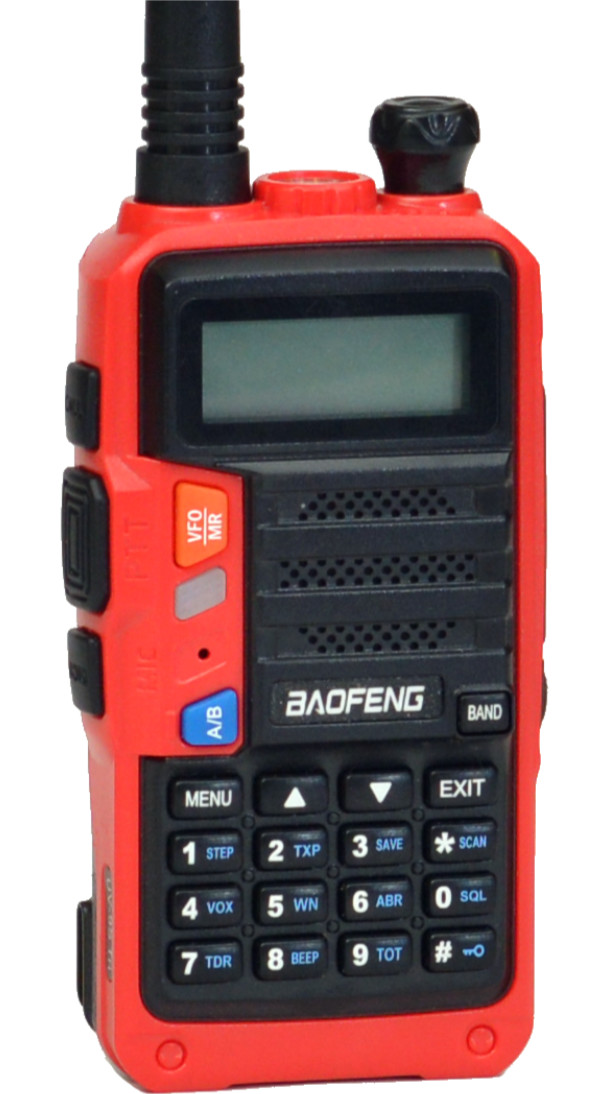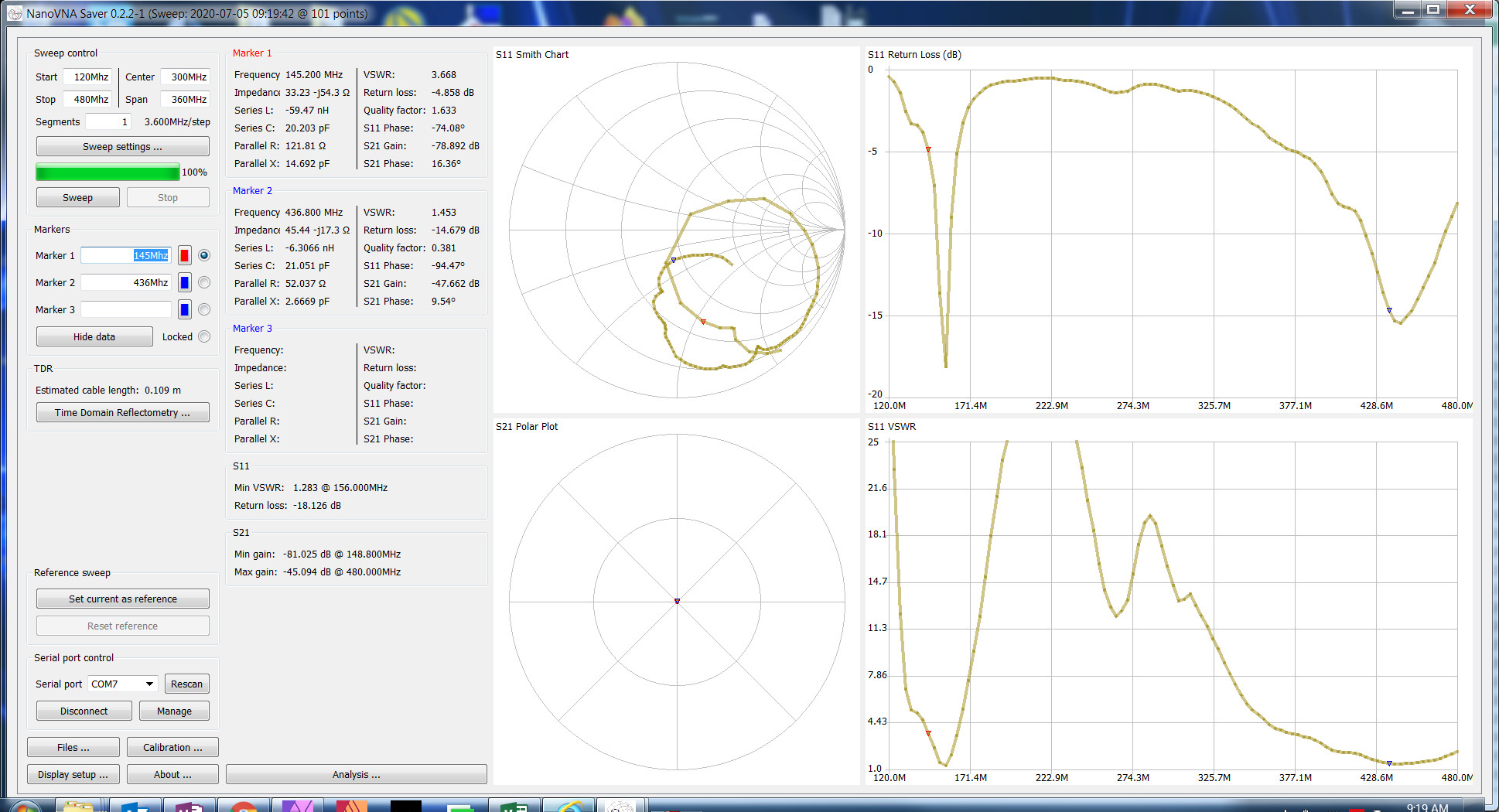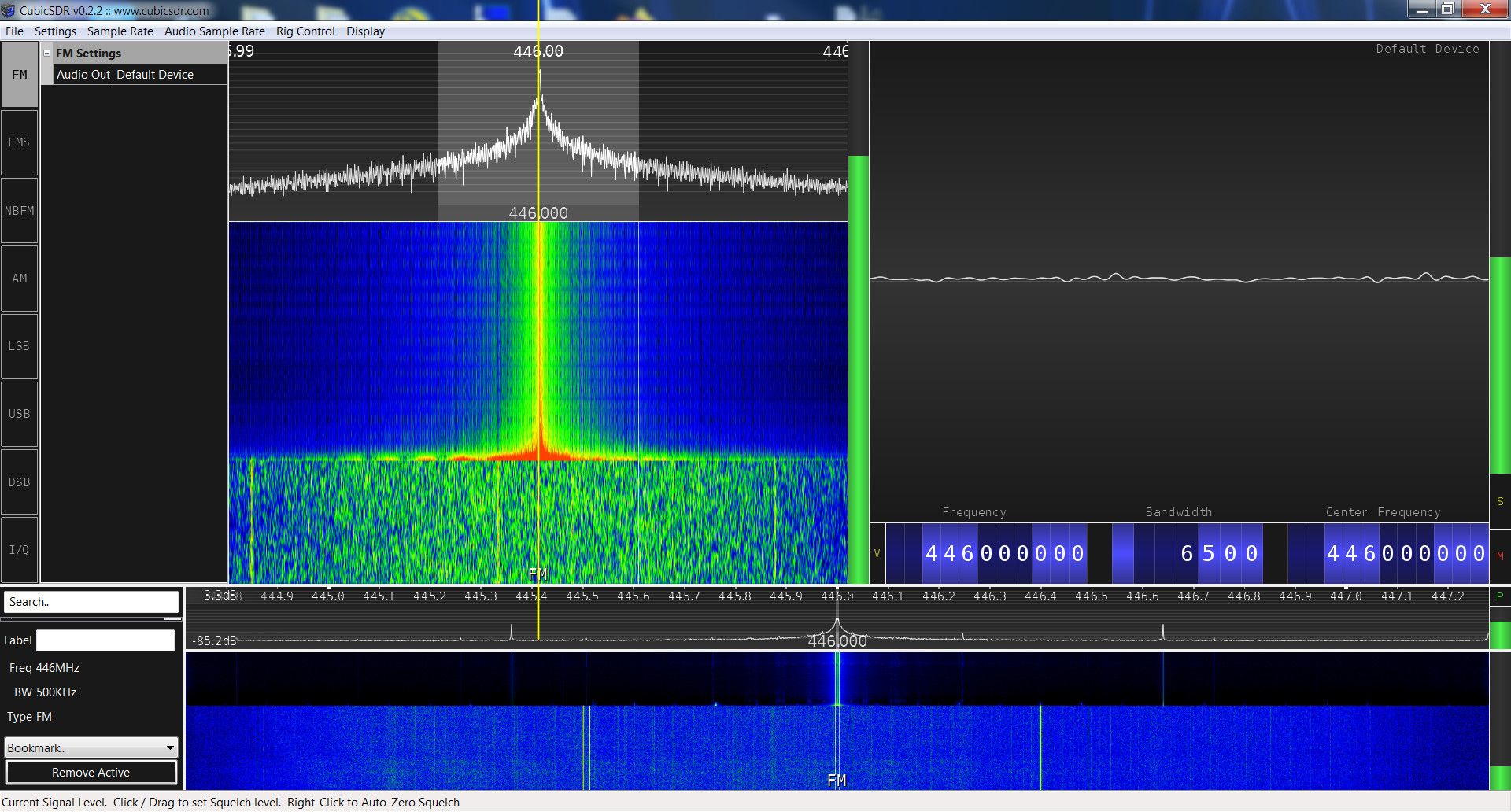 |
The Baofeng UV-9S Tri-Band is a tri-band (2m/1.25m/70cm) radio that comes in standard black or this bright red version. Let’s see how it stacks up with other Baofeng offerings.
I was really looking forward to playing with the Baofeng UV-9S since my favorite cheap Chinese radio is its cousin, the UV-9R Plus. From looking at the description and specs, it looks a lot like this radio is very similar to that one with the addition of a third band.
The fact that the Baofeng UV-9S comes with two antennas was a little worrisome. My other tri-band radio, the Kenwood TH-D74, uses one antenna that works pretty well on all three bands so I wondered what was going on with this one.
What I discovered is that it seems they tried to make an antenna that does all three bands but for whatever reason, they failed miserably. Why do I say that? Look at the VNA chart below, you can clearly see it is a good antenna for both 2m and 70cm, but look closely at the VSWR portion at the 1.25m mark and you can see the drop. This just screams that they tried to make the antenna work on that third band, but it the result is only slightly better than a coathanger (showing my age there).
Sure, they give you an antenna that is better tuned at the 1.25m band in the box with the Baofeng UV-9S but that is a pain to remember to carry it with me, and then a pain to have to change it out.
I honestly do not really need or use 1.25m so let’s just ignore that and move on to other aspects of the Baofeng UV-9S such as the build quality.
One nice thing about many of the Baofeng radios such as the UV-9R and UV-5R is that they feel pretty solid, this is simply not the case with the Baofeng UV-9S. The plastics feel cheap, the buttons and knob on top, and particularly the belt clip all feel substantially inferior to other Baofeng radios. Even the cover over the headphone and mic jacks feels just cheap.
Speaking of feeling, some genius decided to put a charging jack on the batter of the Baofeng UV-9S right where your hand wraps around the radio and it has a sharp edge! Someone needs to fire this person. In-hand comfort is an important aspect of the radio for me and this one little “feature” just kills it for me. So far this is the only Baofeng radio I have seen do this.
My next problem with the Baofeng UV-9S is the battery. While it seems to work well, and it is a 2200mAh so it has plenty of power, the problem is that I have been unable to find replacements. This could be more of a problem with me as maybe I just haven’t found it yet, but while I certainly have found batteries for my other radios including the Baofeng UV-5R, 5RS, 9R, 6R, UV-82, and others, I have not seen one for the UV-9S anywhere. I guess you could just but another radio and use its battery but that seems a bit much when I can easily find batteries for my UV-9R for $14.
Photos
Baofeng UV-9S Test Results:
| Screen readability | Very Good |
| In-hand feel | OK |
| Included antenna | Very Good |
| Construction quality | OK |
| Belt clip | OK |
| Programmability | Very Good |
| Transmit audio | CLICK TO LISTEN |
| Maximum power output (2m/70cm) | 4.1 watts / 2 watts |
| Size | 250 * 59 * 41 mm |
| Actual weight | 9.6 oz |
| Baofeng UV-9S manual | CLICK TO DOWNLOAD |
| Programming software | CLICK TO DOWNLOAD |
| Baofeng UV-9S Overall score |


| FEATURES: | |
|
|
|
|
Conclusions

GET THE BOOK!



I got the same impressions you did, although I expected “cheap” build quality going in … but I needed a 220 MHz handheld for RACES use, and at the time of purchase, the UVS9 was 26 bucks shipped from one of the Amazon vendors (I got a yellow one). On my rig, 220 seems okay. About 4 watts out on high power, good sensitivity and no noticeable intermod (yet) except on 2 meters where that band is pretty much unusable downtown. But for 220, it’s been fine so far. Depending on how our RACES project goes, I may upgrade to a more professional 220 MHz handheld later, but for now, IMHO, the UVS9 is doing the job plenty well.
It is very nice it is a radio that does its duty well I am an old OM and these radios are new, too bad there are no instructions in Italian 73’s de IZ3BJK Diego
Just a remark: the radio this review is about seems to be called Baofeng UV-S9. You are erroneously referring to it as the UV-9S.
Then you might want to email the manufacturer, Baofeng, and let them know they too are in error: https://www.baofengradio.com/products/uv-9s 😉 All jokes aside, it is indeed hard to keep up with model numbers because a manufacturer will make radio XXY, and some other Chinese company will steal the design, change a button color, and rebrand it as the XXY+ or some such.
Apologies. I search online and found loads of references to the UV-S9, which is by weird. I’m now asking myself why I didn’t simply check the manufacturer’s website is anyone’s guess.
I discovered that at least some batches of these radios are marked UV-S9 on the side. You can see that here at 2:30:
https://m.youtube.com/watch?v=VubgmyKtmEc&t=150
I’ve seen that this radio is provided with an AC adapter and a matching charging base, but also with a USB cable that plugs directly to a port on the side of the battery to charge it.
Since USB is 5V, does this mean that charging it from a USB ‘charger’ will take longer than with the AC adapter plus charging base? Has anyone tried this?
The USB AC adapter is not included, so it wouldn’t necessarily be one of those fast chargers that switch to (I think) 9Vdc after negotiating with the device.
I have not tried a comparison between the two on this radio, but on another radio that had a similar feature it did indeed take noticeably longer to charge via USB. I will look into doing a test of that, thanks for the idea!
Re charging
The USB charger is not a quick-charge type, it will only “take” 5V at up to 2.1A. Since the LiIon battery is 7.4V, I assume the USB charger has a DC coverter to generate 9 or even 12V from the USB voltage, and then charges from that, This will always be slower than a direct AC-powered charger which can provide more charging power.
I do have a USB charger for my Icom and Kenwood HTs (which happen to have the same micro-3mm charge plug 😉 which DOES do QuickCharge on supplies that support that, and those indeed are quite a bit faster, just like with cellphones and tablets.